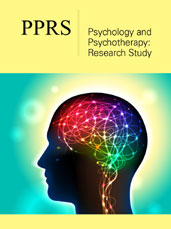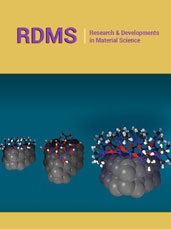- Submissions

Full Text
Psychology and Psychotherapy: Research Studys
Pregnancy and Parenting: The Psychological Well-Being of the Mother and the Effects on the Development of the Child
Letteria Tomasello1* and Miriana Ranno2
1Department of Clinical and Experimental Medicine, University of Messina, Italy
2Department of mental health Sert, drug addiction assistance Provincial health authority Siracusa, Italy
*Corresponding author: Letteria Tomasello, Department of Clinical and Experimental Medicine, University of Messina, 98122 Messina, Italy
Submission: June 19, 2023;Published: July 19, 2024

ISSN 2639-0612Volume8 Issue2
Abstract
Pregnancy is a time of great change for a woman, both physically and psychologically. In addition to the more obvious physical changes, there are changes in mood and in the way, emotions are experienced; identity undergoes major changes and the vision of the future takes on a different connotation. Personal relationships within the couple and family are altered and relationships are profoundly transformed. To manage all these dynamics, it is essential that each woman feels supported in this journey, that she feels comfortable in her own life context, and that she has access to the resources she needs.
A woman’s well-being is fundamental to the way she herself experiences pregnancy, but it also plays a crucial role in the development of the foetus and has profound long-term effects. The way a woman perceives and experiences the period of pregnancy and the attitude she takes influence the outcome of the pregnancy itself and the delivery. The woman’s experience of pregnancy and psychological well-being have short, medium- and long-term effects on the child and its development. This paper aims to investigate the relationships between a pregnant woman’s psychological well-being and the child’s development at two different developmental stages, during gestation and after birth.
Keywords: Pregnancy; Depression; Post partum depression; Attachment
Introduction
The perinatal period is the period that extends from conception to the first year after delivery [1]. It is a very delicate phase, full of transformations from the physical, mental, emotional and practical-organizational point of view. The woman’s (and partner’s) life are turned upside down, personal identity changes, the transition from independent “woman” to “mother” takes place, who has the responsibility of raising another person. Because of the peculiarity and fragility of this moment, it is important to devote attention to this period of life, so as to better understand its characteristics and processes. Several studies, document an increased risk of experiencing problems related to mental health during this time period [2,3]. Postpartum depression is best known, but it is crucial to pay attention to the antepartum period as well, which is very sensitive and therefore carries a higher risk for women to develop anxiety and mood disorders [4]. In order to best support the woman during the perinatal period, it is essential that those around her, especially those closest to her, know how to be supportive and are properly informed. In this regard, attention should also be paid to paternal mental health, since this period is also full of changes and novelties for fathers that can lead to emotional issues and discomfort [5]. For both mother and father, a profound change in personal identity takes place; the transition from couple to family is not immediate and is not without challenges. Becoming a parent involves a mental and emotional reorganization of one’s person: these psychological transformations lead to the consolidation of parental identity. During this process the adult reworks his or her childhood experiences and confronts internalized parental models. This is necessary for the creation of the new parental identity, but it can bring out traumatic experiences and unresolved conflicts [1]. Investing in the prevention of mental distress and the promotion of well-being turns out to be a key action, not only for parents but also for future generations. Taking a broader evolutionary perspective, the well-being of pregnant women influences the kind of society there will be in the future [6].
Physical and emotional well- being
The overall well-being of pregnant women the result of several
factors, both psychophysical and environment-related [7]
A. Health
B. Nutrition
C. Physical movement
D. Rest and sleep
E. Family situation
F. Daily environment
The hormones, estragon and progesterone, increase exponentially and cause strong emotional reactivity, which can trigger moments of crying, fits of anger, or simply general hypersensitivity. All of these phenomena are common, but they can be frightening and confusing for women. It is important to be aware of this and to report any state of distress, with those close to her and with health personnel. Physical health also has a major impact on emotional state [8]. It is important to pay attention to nutrition [9], physical movement, sleep quality, and all factors that support a woman’s physical well-being [7].
Psychological and relational well-being
The social network and family environment play a major role in supporting the mental and physical well-being of pregnant women. In a study by Dabrassi et al. [10] highlight the function of social support, in the attachment relationship between mother and child, from the period of pregnancy and decrease the presence of depressive symptoms. Particular attention is paid to women’s mental health and the role that anxiety and depression play during pregnancy. The phenomenon of baby blues, or maternity blues, is a term for a transient disorder that occurs after childbirth and is characterized by mild depressive symptoms, dysphoria, insomnia, emotional lability, feelings of inadequacy, and anxiety. It usually disappears within a couple of weeks after childbirth and does not require specific treatment [11], this condition affects about 70% of women, and about 20-30% of them subsequently develop postpartum depression. Despite the prevalence of this widespread condition, admitting to feeling sad, anxious, and depressed is not manifested by women who suffer from it and is to date considered taboo in many cultures and social environments. The difficulty in seeking help is also conditioned by the condition of isolation, in which they enclose themselves and the difficulties in accessing appropriate facilities and programs [10]. The meta-analysis by Yin et al. [12], finds that prenatal depression affects 20.7 percent of women worldwide. Mothers who have experienced prenatal depression often suffer from postpartum depression and are therefore at greater risk than other women [13]. Postpartum depression has been considered, a public health problem, both because of the incidence associated with it and because of the consequences on women’s well-being and the quality of the motherchild relationship [14].
Depression is a very common disease in women of childbearing age, it represents one of the major complications during pregnancy and the major risk factor for postpartum depression, the latter being a pathological condition that arises after birth, according to data, affects in Western countries 10-15% of women (Italian Society of Gynaecology and Obstetrics: SIGO, 2008) [15].The incidence in Italy, according to 2013 data provided by the Ministry of Health, ranges from 8 to 12% of women and occurs mainly in the first postpartum trimester, but cases are reported at one year and even beyond [16]. Worldwide, an estimated 350 million people are affected and it causes 850,000 deaths each year. In puerperal depression there is an inability to care for the child, fear and insecurity due to the child’s “fragility,” ambivalent or negative feelings, and fear of harming the infant. If the mother’s difficulties are not acknowledged and the woman is not supported, they will lead to permanence of the disorder up to 6 months or more [16].
Despite its severity and incidence rate, Postpartum Depression is an underdiagnosed phenomenon, only 49% of pregnant women with depressive symptoms are aware of the distress and seek medical intervention. While the remaining 51% of cases underestimate the disorder [16]. The SIGO: Italian Society of Gynaecology and Obstetrics has recognized as necessary a correct information at the time of hospital discharge by medical, obstetrical and nursing staff of the Maternal and Child Department, so as to prevent serious damage, before this manifests itself. (Italian Society of Gynaecology and Obstetrics: SIGO [15]. The Scientific Society in 2008 activated a national campaign with the aim of building a protection network to protect mothers: “Let’s not leave them alone”, which offers not only information but also concrete help for the most fragile women.
Symptoms of postpartum depression
Postpartum depression compromises the woman’s health and her relationship with the baby. The initial assessment to identify whether the woman is at risk includes a detailed medical history, followed by a physical examination and routine laboratory tests [17]. The most frequent symptoms are: instability or emotional swings, ease of crying, lack of energy, sense of inadequacy and pessimistic thoughts, doubts and fears about the ability to care for the child, ambivalent feelings toward the child, guilt, anxiety, feeling worthless, sleep and eating disorders, fear of external contact and closure, loss of sexual interest, frequent thoughts about death and sometimes suicide [15]. Also present are, disturbances in the mother-child relationship. 10-25% of mothers, perceive the child as a burden, do not feel emotions toward the child, have thoughts of aversion toward the child, are afraid of being alone with the child, think of being incapable mothers and wives, cannot concentrate in daily things, which have to do with mother-child interaction (National Observatory on Women’s Health: ONDA) [18].
When the woman has already suffered or has a predisposition to develop bipolar or mixed depression, it is possible that postpartum depression may also be accompanied by psychotic-type symptoms such as: confusion and disorientation, hallucinations, paranoia, behaviours that may put one’s own health and that of the child at risk. These situations are the most critical and should be monitored very closely by a specialist, experienced in treating postpartum depression. Sometimes, they may require hospitalization of the mother or temporary removal of the baby until the situation improves [18].
Risk factors and etiology of the disorder
The National Observatory on Women’s Health [18] has
identified that the causes of postpartum depression are multiple
and involve:
Hormonal factors: after the birth of the baby, a sharp drop
in hormone levels (estragon, progesterone, and cortisol) may
contribute to postpartum depression. Other hormones produced
by the thyroid gland can drop dramatically, leaving one feeling
tired, sluggish, and depressed.
Physical factors: fatigue induced by the rhythms imposed
by the baby; postpartum fatigue becomes a powerful inducer
of stress, which in turn acts on the maternal immune system by
reducing defense and coping capacities, such that the woman is
more vulnerable to depression; sleep alterations that can unleash
a depressive episode.
Psychological factors: a personality characterized by low selfesteem
or tending toward perfectionism.
Social factors: young age, inexperience, lack of help and
support from both family and partner, low economic status.
Cognitive factors: having unrealistic expectations about being
a mother or child. There are numerous researches in the literature
on the etiology of the problem, which have studied the correlation
between the incidence of postpartum depression and social,
psychological and physical characteristics of the woman.
Strong to moderate risk factors
Many studies agree that the presence of anxiety, stress, and depression in pregnancy are the most influential factors on the occurrence of postnatal depression. Having experienced depression or anxiety during pregnancy is one of the factors most correlated with the ‘onset of postnatal depression [19,20], through a meta-analysis evaluated 14 studies with over 3000 patients who had a previous history of psychiatric disorders or postpartum depression. This research found that these women had an increased risk of developing postpartum depression and that this factor had a high to moderate impact on the onset of the condition. Prenatal depression is believed to be the main risk factor for the development of postpartum depression [19], as is prenatal anxiety [21]. Another factor is the presence of psychiatric disorders prior to pregnancy. In fact, the presence of familiarity predisposes to the development of the pathology in question. The relationship between life events and the onset of postpartum depression plays an important role Experiences such as the death of a spouse, the end of a relationship with a partner, the loss of a job, or moving are stressful events that are triggers for postpartum depression. Milgrom et al. using a retrospective study, have found that negative life events in the past or in recent times, such as: miscarriage or death of the child at birth, health problems of the infant or family member, and work problems, were associated with an increased likelihood of clinical diagnosis of depression [19]. Social support assumes great importance. Indeed, it has been hypothesized that the perception of social support through relatives and friends during times of stress may be a protective factor against the onset of depression [19]. Women with inadequate social and family support, marital difficulties, dissatisfaction, or recent adverse life events are more likely to develop postpartum depression [22,23].
Moderate risk factors
The risk factors that have a moderate impact on postpartum depression are: personality and relationship with partner. Women who were classified as nervous, shy, worried, or women with a negative attribution style pessimistic, angry, with a tendency to ruminate thoughts) during pregnancy would be more likely to develop postpartum depression [20]. An increased risk of postpartum depression occurs in women who experience marital problems during pregnancy [24]. Romito & colleagues [25] in a longitudinal study, demonstrate the impact of violence experienced by the mother from her partner, on the development of maternal psychological distress [25]. Sometimes, becoming a parent can challenge the organization of the entire family system. Generally, the mother assumes the role of caring for the child and the home, while the father manages the work aspects.
Low risk factors
Unemployment, low income and low cultural level have always been considered risk factors for the development of mental disorders, and in particular depression [26]. Low income, the presence of financial problems, partner’s work status, and lower socioeconomic status would have a significant relationship with postpartum depression, and these aspects would remain constant even in countries [19]. Complications in pregnancy such as: threatened miscarriage, preeclampsia, early labour or caesarean delivery, would be considered minor risk factors for the onset of depressive illness [27].
Diagnostic criteria to identify postpartum depression
Postpartum depression can be diagnosed using the Diagnostic Manual of Mental Disorders: DSM-V (American Psychiatric Association 2013) [28]. For diagnostic purposes, it is recommended to follow the guidance in this manual and keep in mind that in the pre- and postnatal experience there are normal changes in a woman’s psychological functioning, such as: sleep disturbances, fatigue, loss of interest and pleasure in things, anxious thoughts about the baby, which should not lead to any diagnosis.
DSM-V (Diagnostic Manual of Mental Disorders): According to DSM-5 to make a diagnosis of depression, the patient must present with at least five or more symptoms, drawn from a given list, over a period of at least two weeks. “Depressed mood” or “loss of interest or pleasure” must also appear in the five or more symptoms.
Symptoms listed in the DSM-5 include:
A. Depressed mood for most of the day, almost every day
B. Marked decrease in interest or pleasure (anhedonia) for
all, or almost all, activities for most of the day
C. Significant weight loss in the absence of dieting or weight
gain (e.g., a change in body weight of more than 5 percent over
a month may be significant), or reduced/increased appetite
almost every day
D. Insomnia or hypersomnia almost every day
E. Agitation or psychomotor slowdown almost every day
F. Fatigue or lack of energy almost every day
G. Loss of energy
H. Excessive or inappropriate feelings of self-evaluation or
guilt almost every day
I. Reduced ability to think or concentrate, or indecision
almost every day
J. Recurrent thoughts of death (not just fear of dying),
recurrent suicidal ideation without a specific plan, or attempted
suicide, specific plan to commit suicide [28].
Classification of psychiatric disorders in postpartum
Major disorders in postpartum include:
Postpartum blues or Baby Blues: Baby blues is a mild
transient disorder, usually affecting women in 60-80% of cases,
occurs on the third or fourth day after delivery and subsists for
two weeks. At this stage the woman has an abrupt hormonal
drop in estrogen, irritability and physical fatigue ensue. These
manifestations if accompanied by special psychological factors
can be prolonged until they result in postpartum depression [18].
Baby Blues is characterized by a general feeling of “Not feeling
like oneself anymore” and sadness that lingers for much of the
day. Women in this condition may present with one or more of the
following symptoms: feelings of inadequacy toward the newborn,
irritability, nervousness, emotional lability with bouts of crying for
no apparent reason, difficulty sleeping, loss of appetite and weight
loss, and hyperactivity [29].
Postpartum depression: This is a mood disorder of more
severe magnitude; 10 to 20% of new mothers are affected, often in
the first 3-6 months after delivery and up to a year later if not treated
pharmacologically. Symptoms include: loss of interest in normal
activities, inclination to cry, feeling of guilt, anxiety, asthenia, lack of
self-esteem, loss of concentration or memory, excessive concern for
the child or complete lack of concern, panic attacks, suicidal urges.
This disorder impacts the woman, the child, the partner, the couple
and the mother-child relationship [29].
Postpartum Depression: This is a more severe mood disorder,
10 to 20% of new mothers are affected, often in the first 3-6 months
after delivery and up to a year later if not treated pharmacologically.
Symptoms include: loss of interest in normal activities, inclination
to cry, feeling of guilt, anxiety, asthenia, lack of self-esteem, loss
of concentration or memory, excessive concern for the baby or
complete lack of concern, panic attacks, and suicidal urges. This
disorder impacts the woman, the child, the partner, the couple and
the mother-child relationship [29].
Postpartum or puerperal psychosis: A particularly severe
and rare depressive condition, it affects 0.5-1% of women per 1000
deliveries. Typical onset is very early (3-4 days after delivery) and in
any case within the first four weeks after delivery; the disorder may
evolve into a pure form of major depression. Puerperal psychosis
is manifested by: delusional ideation, hallucinatory phenomena,
restlessness, motor agitation or bizarre behaviour, excessive
and irrational fears and worries with respect to the child, mood
fluctuations with inappropriate emotions, and insomnia [29]. The
behaviour may seem out of touch with reality, such as not caring
for the child’s physical and psychological needs or an inability to
meet the child’s needs. There is a high risk of suicide and figlicide,
especially when the focus of delusions or hallucinations is on the
child, perceived by the mother as threatening [18].
Consequences of postpartum depression
Postpartum depression is a psychological disorder with multifactorial etiology, including the contribution of biological, environmental and psychosocial variables. Therefore, the effects of postpartum depression also prove to be multiple, involving not only the woman but also the whole family unit.
Effects on the woman: Depression produces in mothers a limitation in the expression of affectivity and a tendency to interpret the child’s behaviour negatively: they feel annoyed, unresponsive, have difficulty interpreting requests, and fail to meet basic needs. Depression significantly interferes with parental function and caregiving; such distress creates reduced responsiveness to the child’s signals and thus impairment of a secure attachment pattern [30]. Suffering from a mental disorder tends to isolate the woman from her social relationships, creating distress. When depression sets in pre- and post-partum this adds to the initial disorder, exacerbating the condition and thus new symptoms arise, such as: worrying about not being able to fulfill in the necessary ways the role of mother, in caring for herself during pregnancy and later for the newborn [31].
Psychological Well-Being of Pregnant Women: Short- and Long-Term Effects on Fetus and Baby
Prenatal effects on the fetus
In recent years thanks to multidisciplinary collaboration, studies have focused on the importance of the prenatal period and how significantly the developmental environment affects infant health in the short and long term [32]. As early as conception, the characteristics of the uterine environment and overall maternal well-being significantly influence the neural development of the fetus and form the foundation for its future growth [33]. Developmental psychology and epidemiological methodology have examined, “fetal programming,” understood as the ability of the cells of the embryo and fetus to define their own epigenetic set up in response to information from the mother and the outside world, another approach, on the other hand, has examined some prenatal processes to assess their role in the postnatal period, evaluating their effects and the consequences this has on the child in the long term [34]. Another effect on development is influenced by hormones that regulate various physiological functions of the body, act on emotions, and affect a person’s mental health [35]. The role of Corticotropin-Releasing Factor (CRH) has been studied. It has the role of stimulating the production of Adrenocorticotropic Hormone (ACTH), which produces cortisol, commonly referred to as the stress hormone. During pregnancy, CRH is also produced by the placenta, and its levels increase exponentially. The amount of CRH present in the body appears to be a predictor of gestational length of pregnancy: mothers who delivered preterm had higher CRH levels between weeks 28 and 30 than those who delivered at term [36]. Babies born prematurely, in turn, show high blood CRH levels, which are higher than the values of babies born at term [37].
The study by Van den Bergh, Mulder et al. [38] reveals that fetuses of women who have experienced severe stressful events during pregnancy have lower heart rate variability, which is an indication of existing problems at the neural level. Prolonged exposure to high levels of cortisol affects the development of the fetus’ nervous system and has adverse effects on the fetal heart rate and its sleep patterns [36]. The study by Diego et al. [39] found that high maternal cortisol levels result in lower birth weight, smaller head circumference and growth delays during the first year of life. Hormones are involved in mood regulation and psychological wellbeing, and hormones in pregnant women have been investigated to understand how they affect the fetus.
Mothers who have suffered and experience anxiety have increased resistance of the uterine arteries, which can lead to hypertension and developmental defects in the fetus due to decreased blood flow reaching the uterus [37]. Maternal depression has a strong impact on the neurobehavioral development of the fetus. The study by Field et al. [37] shows that at birth their babies had high levels of cortisol and norepinephrine and low levels of dopamine, and 24% were born prematurely and had growth retardation, fetal growth velocity and the birth weight are among the main causes of infant mortality and are determining factors for the health of the child in the long term [39].
Socio-emotional development of the child
The Glover study [40] reports that infants of depressed mothers exhibit significant differences compared to infants of nondeprened mothers. At birth they are less responsive, hypotonic and exhibit agitated behaviour, manifest difficulties in sleep and lactation. Maternal anxiety and depression are more likely for the child to develop depressive symptoms and conduct disorders in adolescence [41]. The child’s socio-emotional development involves the acquisition of social and emotional skills, such as self-regulation, the process of coding social information and the understanding of the emotions of their own and others. Socioemotional competence is built in early childhood and lays the foundations for a good global functioning within society and for the future well-being of the person. If the development takes place in a dysfunctional way, or later than the typical evolutionary stages, the child may incur mental problems even serious in adolescence and adulthood. Children relate to the environment and respond to stimuli, in different ways, based on individual differences and experiences, will create patterns of action and behavior that will later use to relate to others, a fundamental dimension for the social and emotional development of the child is Negative Affectivity (NA), understood as the tendency to experience more and more intensely negative emotions. The NA, already present and visible in the first days of life, will change over time, thanks to the experiences and the relationship that will establish with parents. The predictors of NA are the mother’s depressive or anxious disorders [42]. In interactions with children the emotional patterns of the parents are transmitted and the child shows a very high percentage of socioemotional responses similar to those of the child. In interactions with children the emotional patterns of parents are transmitted, and the child shows a very high percentage of socio-emotional responses similar to those of parents.
Neuro-development of the child
Meta-analysis of Madigan et al. [33] confirms that prenatal maternal stress causes a reduction in blood flow in the placental arteries and consequently a lower amount of blood in the cerebral circulation of the fetus. This affects nutrient transport and can lead to a decrease in the rate of fetal growth, preterm birth and lower birth weight, increasing the likelihood that the baby will develop other issues. The effects of maternal stress can cause delays in the neuro-development of the child, as well as impairing his future growth.
Under normal conditions, the placenta has the function of barrier and filters the maternal hormones, in particular cortisol, which is transformed into inactive cortisone and does not reach the fetus, when the mother is subjected to high stress, The amount of cortisol present in the maternal blood is greater, it goes beyond the placenta and reaches the fetus [33]. Some authors note that being subjected to particularly stressful events in pregnancy increases the likelihood that the fetus will present malformations, especially at the cranial level. Suffering traumatic experiences, such as bereavement or dismissal, increases the likelihood of miscarriage [32].
Depressed mothers have worse physical and mental health than other mothers and tend not to seek help [33]. Another factor that affects the development of the child is the belonging of the family to a low socio-economic band, in these nuclei the environment is poorly cleaned and unsafe, eating habits are incorrect, these families usually receive inadequate prenatal care and mothers have a higher risk of having complications before and during childbirth, resulting in an increased risk of infant mortality [33]. The study of Frigerio & Nazzari [43] shows that maternal sensitivity can moderate the effects of maternal anxiety during pregnancy on the child’s behavioral problems. Prenatal anxiety of the mother is associated with an increased amount of externalizing behavior of the child when the maternal sensitivity is low and the mother is detached towards the child. The quality of parental care is a factor of protection for the effects of emotional and depressive disorders of the mother on the child, favoring a better motherchild relationship and increasing the chances of success of future interventions [44]. Prenatal maternal depression causes negative affectivity in children between 3 and 12 months old, who exhibit increased aggressive behavior [43].
Therapeutic interventions: the different approaches
In order to reduce the symptoms of anxiety and depression in pregnant women you can choose different ways and different approaches, using drugs or other methods, such as therapy and meditation. Psycho drugs go beyond the placenta and reach the fetus, so it is important to carefully evaluate the specific situation before deciding to administer this type of medication to a pregnant woman. Some studies have reported the occurrence of congenital malformations in the fetus due to the taking of drugs in pregnancy (about 1.2% of cases), obstetric complications during childbirth, miscarriage, gestational diabetes, sleep difficulties and side effects on the long-term behavioural development of the child [45]. A study by Kieviet et al. [46] found that 30% of children exposed to Selective Serotonin Reuptake Inhibitors (SSRIs) during pregnancy have Poor Neonatal Adaptation Syndrome (PNAS), the main symptoms of which are nervousness, Accelerated breathing, restlessness and muscle hypertonia. If the mother takes psychotropic drugs before becoming pregnant or if during pregnancy she wishes to stop treatment, it is important to make some considerations. Abrupt discontinuation of benzodiazepines, antidepressants or antipsychotics causes withdrawal symptoms to both mother and child and they show in the form of tremors, agitation and difficulties in breastfeeding up to eight hours after birth. Not treating mental disorders in the perinatal period can cause complications in pregnancy, an early onset of labor and low birth weight, due to the elevated passage of cortisol from maternal blood to fetal blood. Similarly, leaving these disorders untreated can lead to psychological disorders for the child, such as irritability and nervousness, poor responsiveness to stimuli and reduced facial expressions.
González et al. [45], reports that children exposed to depressive and/or anxious symptoms present difficulties in being consoled, less social interaction, reduced movements of the arms and head and strong irritability to external stimuli. A meta-analysis of Callanan et al. [47] reports the effectiveness of non-farmacological treatments in managing anxiety disorders in pregnant women. Three studies used mindfulness-based programs that were taught to women to relieve symptoms of anxiety and depression [48-50]; two studies were based on Cognitive Behavioral Therapy (CBT) [51,52] and another approach used a combination of the two techniques [53].
Programs that used mindfulness were proposed in group settings, while CBT interventions were administered one-to-one. These studies, [51,50,53] reported significant improvements in the management of perinatal anxiety after treatment, significant improvements, were also observed with regard to perinatal depression 87% of the subjects said they were satisfied with the proposed treatment and in a follow-up after 18 months from the measurements it is noted that the subjects were more involved in the aspects of house management and had less psychological distress [50,53], Combining mindfulness techniques with CBT has given the best and most lasting results over time, However, further studies and research are needed to identify the most effective therapies and practices and, above all, to invest in the prevention of these disorders. Moreover, making health, physical and mental care services accessible to everyone is a fundamental step in improving the condition of women and children in the spring period.
Conclusion
The studies examined in this review highlight the importance of paying attention to the perinatal period, to safeguard the health of the mother and to promote the healthy development of the child. The changes that a woman faces during the prenatal period are many and involve all aspects of her life, having a relational context that offers adequate support promotes the creation of a good bond of attachment between mother and child and increases the mother’s ability to understand and respond to the needs of her child. Structures and professionals dealing with pregnancy and birth play a decisive role in supporting the woman, and care should be extended even after childbirth. Numerous authors have investigated the effects that anxiety and depression have on the development of the child, both in the short and long term and involve the motor, neural, socio-emotional, psychological and relational areas. Depression and maternal anxiety increase the likelihood for children to develop mood and conduct disorders in adolescence. Studies have been carried out to investigate which therapies and techniques are most effective in the treatment of anxiety and depressive disorders. Drug therapy presents risks, since psycho drugs cross the uterine barrier and it is necessary to pay attention to any withdrawal symptoms, both in the mother and in the child; other approaches, such as mindfulness and cognitive therapy have proven very effective, especially when used together
However, it is necessary to increase awareness and knowledge about the type of interventions and their effectiveness. Greater attention must be paid to the theme of perinatal psychological well-being, given its importance in the development and growth of future generations. More attention needs to be paid to the care of women and families before and after childbirth, this is necessary to create the optimal conditions in which children can grow by getting the care they are entitled to and need.
References
- Della VA (2011) The promotion of perinatal mental health, Carocci, Rome.
- Gavin NI, Gaynes BN, Lohr KN, Meltzer BS, Gartlehner G, et al. (2005) Perinatal depression: a systematic review of prevalence and incidence. Obstetrics & Gynecology 106(5:1): 1071-1083.
- Hara MW, Cabe JE (2013) Postpartum depression: current status and future directions. Annual Review of Clinical Psychology 9(1): 379-407.
- Della AM, Ducceschi B, Pellizzari N, Cristini C (2014) Maternal psychological well-being and infant temperament: survey in a sample of Italian women and their children in the third month of life. Psychology research.
- Paulson JF, Bazemore SD (2010) Prenatal and postpartum depression in fathers and its association with maternal depression: a meta-analysis. Jama 303(19): 1961-1969.
- Odent M (2006) Womb ecology: New reasons and new ways to prepare the prenatal environment. Journal of Prenatal & Perinatal Psychology & Health 20(3): 281.
- Di Pietro P (2002) Healthy pregnancy and birth, Red editions, Novara, Italy.
- Sahin M. Bademli K, Lok N, Uzun G, Sari A, et al. (2018) Relationship between physical activity levels and well-being of individuals. Sci Movement Health 18(2): 337-343.
- Martin C, Redshaw M (2012) Psychological well-being in pregnancy: food for thought. Journal of Reproductive and Infant Psychology 2(4): 325-327.
- Dabrassi F, Imbasciati A, Della AM (2009) The social support in pregnancy: Italian validation and assessment of the instrument. Giornale Di Psicologia 3(2): 141-151.
- Reck C, Stehle E, Reinig K, Mundt C (2009) Maternity blues as a predictor of DSM-IV depression and anxiety disorders in the first three months postpartum. Journal of Affective Disorders 113(1-2): 77- 87.
- Yin X, Sun N, Jiang N, Xu X, Gan Y, et al. (2021) Prevalence and associated factors of antenatal depression: systematic reviews and meta-analyses. Clinical Psychology Review 83: 101932.
- Ayano G, Tesfaw G, Shumet S (2019) Prevalence and determinants of antenatal depression in Ethiopia: a systematic review and meta-analysis. Plos One 14(2): e0211764.
- Aceti F, Aveni F, Baglioni V, Carluccio G, Colosimo D, et al. (2012) Perinatal and postpartum depression: Between attachment and personality.
- Pasquale E, Guaschino S (2008) How to prevent and deal with postpartum depression. Italian Society of Obstetrics and Gynecology (SIGO) 25(1): 60-78.
- Mencacci C, Anniverno R (2010) Postpartum depression in Italy: snapshot of the problem. Italian manual of Obstetrics and Gynecology 9(1): 35-52
- Sit DK, Wisner KL (2009) Identification of postpartum depression. Clinical Obstetrics and Gynecology 52(3): 456-468.
- Merzagora F, Mencacci C (2005) Depression during pregnancy and postpartum. National Observatory on Women's Health (ONDA) 30(1): 39-60.
- Milgrom J, Gemmill AW, Bilszta JL, Hayes B, Barnett B, et al. (2008) Antenatal risk factors for postnatal depression: A large prospective study. Journal of Affective Disorders 108(1): 147-157.
- Hara MW, Swain AM (2004) Rates and risk of postpartum depression-a meta- analysis. International Review of Psychiatry 8(1): 37-54.
- Beck CT (2001) Predictors of postpartum depression: An update. Nursing Research 50(5): 275-285.
- Lancaster CA, Gold KJ, Flynn HA, Yoo H, Marcus SM (2010) Risk factors for depressive symptoms during pregnancy: A systematic review. American Journal of Obstetrics and Gynecology 202(1): 5-14.
- Gjerdingen D, McGovern P, Attanasio L, Johnson PJ, Kozhimannil KB (2014) Maternal depressive symptoms, employment, and social support. Journal of the American Board of Family Medicine : JABFM 27(1): 87-96.
- Kumar R, Robson KM (2002) A prospective study of emotional disorders in childbearing women. The British Journal of Psychiatry : The Journal of Mental Science 144: 35-47.
- Romito L, Kaufman JS, Lo B, Zonderman AB (2012) Intimate partner violence against adult women and its association with major depressive disorder, depressive symptoms and postpartum depression: A systematic review and meta- analysis. Social Science & Medicine 75(6): 959-975.
- World Health Organization (2001) International classification of functioning, disability and health: ICF. World Health Organization.
- Johnstone SJ, Boyce PM, Hickey AR, Morris AD, Harris MG (2001) Obstetric risk factors for postnatal depression in urban and rural community samples. Australian and New Zealand Journal of Psychiatry 35(1): 69-74.
- DSM-5 American Psychiatric Association (2013) Diagnostic and statistical manual of mental disorders, American Psychiatric Publishing, Arlington, USA.
- Agati S, Teodoro MC, Tomaselli T, Barbera N, Agati A, et al. (2011) Postpartum depression: Clinical and medico-legal evaluation. Italian Journal of Obstetrics and Gynecology 33(1): 24-29.
- Bowlby J (1988) A secure base: clinical applications of attachment theory, New York, USA.
- Howard L, Hoffbrand SE, Henshaw C, Boath L, Bradley E (2005) Antidepressant prevention of postnatal depression. The Cochrane Library.
- Dayan J, Graignic PR, Chokron S, Jacquet AY, et al. (2014) Effects of prenatal stress on fetal and child development: A critical literature review. Neuroscience and Biobehavioral Reviews 43: 137-162.
- Madigan S, Oatley H, Racine N, Fearon RP, Schumacher L, et al. (2018) A meta-analysis of maternal prenatal depression and anxiety on child socioemotional development. Journal of the American Academy of Child & Adolescent Psychiatry 57(9): 645- 657.
- Dipietro J, Kivlighan K, Costigan K, Rubin S, Shiffler D, et al. (2010) Prenatal antecedents of newborn neurological maturation. Child Development 81(1): 115-130.
- Singh Dk, Mishra JP, Singh RK (2022) A Study of human happiness, health, hormones, brain and body related to green-psycho-chemistry. International Journal of Novel Research and Development 7(3).
- Wadhwa P, Porto M, Garite T, Chicz DA, Sandman C (1998) Maternal corticotropin-releasing hormone levels in the early third trimester predict length of gestation in human pregnancy. American Journal of Obstetrics and Gynecology 179: 1079-1085.
- Field T, Diego M, Hernandez RM, Schanberg S, Kuhn C, et al. (2003) Pregnancy anxiety and comorbid depression and anger: effects on the fetus and neonate. Depression and Anxiety 17(3): 140-151.
- Bergh BR, Mulder EJ, Mennes M, Glover V (2015) Antenatal maternal anxiety and stress and the neurobehavioural development of the fetus and child: links and possible mechanisms. A review. Neuroscience & Biobehavioral Reviews 29(2): 237-258.
- Diego MA, Field T, Hernandez RM, Schanberg S, Kuhn C, et al. (2009) Prenatal depression restricts fetal growth. Early Human Developmemt 8(1): 65-70.
- Glover V (2014) Maternal depression, anxiety and stress during pregnancy and child outcome; what needs to be done. Best practice & research. Clinical Obstetrics & Gynaecology 28(1): 25-35.
- Murray L, Arteche A, Fearon P, Halligan S, Goodyer I, et al. (2011) Maternal postnatal depression and the development of depression in offspring up to 16 years of age. Journal of the American Academy of Child & Adolescent Psychiatry 50(5): 460-470.
- Spry E, Aarsman S, Youssef G, Patton G, Macdonald J, et al. (2020) Maternal and paternal depression and anxiety and offspring infant negative affectivity: a systematic review and meta- analysis. Developmental Review 58: 100934.
- Frigerio A, Nazzari S (2021) Antenatal maternal anxiety, maternal sensitivity and toddlers' behavioral problems: An investigation of possible pathways. Early Human Development 157: 105364.
- Gunnar MR, Hostinar CE, Sanchez MM, Tottenham N, Sullivan RM (2015) Parental buffering of fear and stress neurobiology: Reviewing parallels across rodent, monkey and human models. Social Neuroscience 10(5): 474-478.
- González M, Miguel S, Perpiñá S, Roig E, Gurrutxaga M, et al. (2021) Neonatal behavior of babies exposed to maternal depressive and anxiety disorders during perinatal period. Journal of Clinical Psychology with Children and Adolescents 8(2): 8.
- Kieviet N, Dolman KM, Honig A (2013) The use of psychotropic medication during pregnancy: how about the newborn?. Neuropsychiatric Disease andTreatment 9: 1257-1266.
- Callanan F, Tuohy T, Bright AM, Grealish A (2022) The effectiveness of psychological interventions for pregnant women with anxiety in the antenatal period: A systematic review. Midwifery 104: 103169.
- Townshend K, Caltabiano NJ, Powrie R, O’Grady H (2018) A preliminary study investigating the effectiveness of the Caring for Body and Mind in Pregnancy (CBMP) in reducing perinatal depression, anxiety and stress. Journal of Child and Family Studies 27: 1556-1566.
- Warriner S, Crane C, Dymond M, Krusche A (2018) An evaluation of mindfulness-based childbirth and parenting courses for pregnant women and prospective fathers/partners within the UK. Midwifery 64: 1-10.
- Zhang JY, Cui YX, Zhou YQ, Li YL (2019) Effects of mindfulness- based stress reduction on prenatal stress, anxiety and depression. Psychology, Health & Medicine 24(1): 51-58.
- Loughnan SA, Sie A, Hobbs MJ, Joubert AE, Smith J, et al. (2019) A randomized controlled trial of ‘MUMentum Pregnancy’: internet-delivered cognitive behavioral therapy program for antenatal anxiety and depression. Journal of Affective Disorders 243: 381-390.
- Burger H, Verbeek T, Aris-Meijer JL, Beijers C, Mol BW, et al. (2020) Effects of psychological treatment of mental health problems in pregnant women to protect their offspring: randomised controlled trial. The British Journal of Psychiatry 216(4): 182-188.
- Yazdanimehr R, Omidi A, Sadat Z, Akbari H (2016) The effect of mindfulness-integrated cognitive behavior therapy on depression and anxiety among pregnant women: a randomized clinical trial. Journal of Caring Sciences 5(3):195-204.
© 2024 Letteria Tomasello, This is an open access article distributed under the terms of the Creative Commons Attribution License , which permits unrestricted use, distribution, and build upon your work non-commercially.
 a Creative Commons Attribution 4.0 International License. Based on a work at www.crimsonpublishers.com.
Best viewed in
a Creative Commons Attribution 4.0 International License. Based on a work at www.crimsonpublishers.com.
Best viewed in 







.jpg)






























 Editorial Board Registrations
Editorial Board Registrations Submit your Article
Submit your Article Refer a Friend
Refer a Friend Advertise With Us
Advertise With Us
.jpg)






.jpg)














.bmp)
.jpg)
.png)
.jpg)










.jpg)






.png)

.png)



.png)






